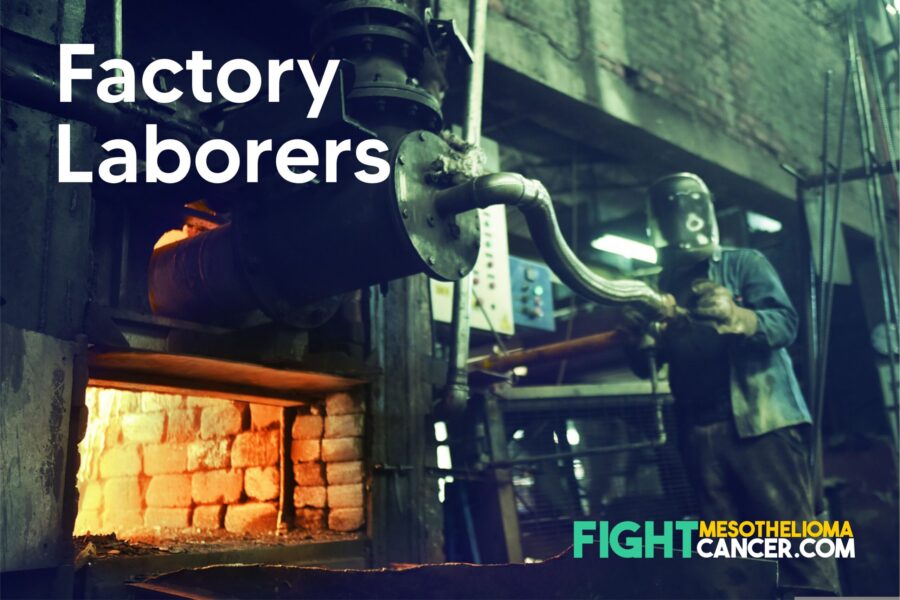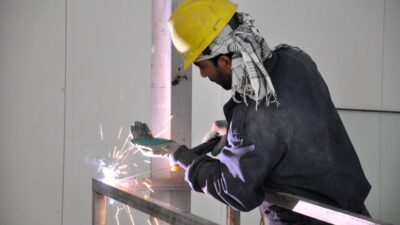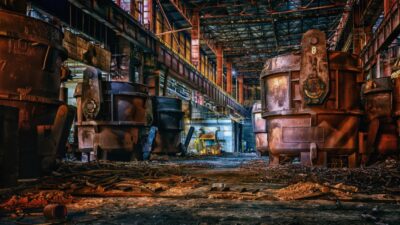Factory laborers represent a broad group of American workers totalling 11% of the country’s workforce that do various jobs such as front assembly line (in automotive plants), packaging lines (in clothing factories), loading and unloading raw materials and finished products, pack raw materials & package them into boxes, operate automatic and semi-automatic machinery and tools e.g conveyor belts, clean factory machinery and general working space, as well as other duties.
Thousands of American factory workers may have been exposed to Asbestos on the job before the 1980s, and not aware of this.
There is a slight chance even today that factory workers may be exposed to Asbestos fibers on the job, although Asbestos products were banned from industrial & commercial use in the early 1980s by the Environmental Protection Agency (EPA).
Before the early 1980s, Asbestos was used in over 3000 commercial & consumer products ranging from baby powders, cigarette filters, duct tapes, fire curtains, machine room ducts, roofing felts, turbines to welding blankets.
Any laborer who worked in a factory that produced any asbestos containing products has a sure chance of being exposed to Asbestos fibers that dissipitate into the envinronment.
However, all cases of asbestos exposure are not easy to detect or prove. For example, a cement factory worker opening a big bag full of asbestos containing cement sure knows he was exposed to Asbestos, while a welder wearing a protective mask working on a welding rod may not.
Another example is sewing machine workers who had no idea they were being exposed to Asbestos fibers when bending over their sewing machines and making oven mitts.
Factory workers may also be exposed to Asbestos fibers thanks to the machinery they used on their jobs. Because of its resistance to heat & fire and its insulating properties, asbestos was used as a packaging item for ball bearings and other friction bearing parts.
As friction rubbed against those parts, small asbestos dust or fibers quickly dissipitated into the factory environment putting all workers at risk of inhaling them.
Other machines that used asbestos as moving parts & packing agents include assembly line machinery, industrial fans, packing equipment, machine room ducts & ceilings, boiler insulators, turbines, etc.
Laborers who maintained the machinery in the factory were at even greater risk of inhaling asbestos fibers due to cleaning, changing parts & maintaining parts of machinery that was built with asbestos for insulation & to insulate these machinery from heat & fires.
Laborers responsible for maintaining factory machinery could have inhaled asbestos fibers when for example replacing bearings or friction bearing parts, ground pistons, etc.
Similarly, auto mechanics who open brake compartments to replace pads & linings could also inhale asbestos fibers.
Many factory buildings that were built prior to the 1980s were constructed with asbestos containing products because of their insulating properties as well as resistance to heat & fire.
Consequently, those workers who maintain & clean these buildings are also at great risk of asbestos exposure.
If you have worked in a factory that has not had comprehensive asbestos abatement or removal service done prior to the 1980s, chances are you have been exposed to asbestos fibers in that environment.
Some common work areas where asbestos containing products, and thus asbestos fibers in the air can be found are:
- asbestos aprons & papers
- beverage filters
- cigarette filters
- electrical appliances
- fire bricks
- fireproof hearth & oven mats
- fireproof safety clothing
- hair dryers
- oven mitts
- potholders
- siding shingles
- stove mats
- trivets
Case Study: Asbestos in Cigarette Filters
Because of its resistance to heat, insolubility, & its insulation capabilities, asbestos was commonly used in cigarette filters before the 1980s.
For instance in the early 1950s, the Kent brand cigarettes used crocidolite asbestos as part of their Micronite filters. Also called ‘blue asbestos’, crocidolite asbestos is a form of asbestos that is used for fireproofing & insulation.
Infact, between 1952 and 1956, the Kent company produced about 12 billion Kent cigarettes, with asbestos in the Micronite filters.
The company believed asbestos will help its cigarettes remove the filter’s tars and nicotine. The asbestos used could be spun into extremely thin & fine fibers that could easily trap dangerous smoke particles such as tars & nicotine, in sizes smaller than a micron.
The Kent company did not realize however that the tiny asbestos fibers broke loose from the micronite filters and were sucked into their lungs by smokers of Kent’s cigarettes.
dr. Maryama













